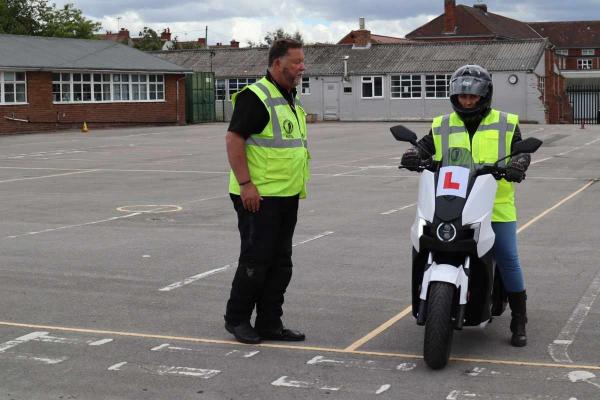
Motorcycles and other ‘powered light vehicles’, or PLVs, could play a key role in the UK’s 2050 net zero efforts, but issues with the current licensing system are getting in the way, the Motorcycle Industry Association (MCIA) reckons.
Having already called for an overhaul of the CBT (compulsory basic training) process earlier this year, the MCIA has released ‘A Licence to Net Zero’ - a proposal containing various suggested reforms with the aim of encouraging more people onto two wheels.
“Obtaining a PLV licence is burdensome, repetitive and costly with intimidating testing requirements,” the proposal states, adding, “Simplifying the licensing process would significantly lower barriers to entry, remove duplication and reduce costs. Safety can be improved rather than compromised in the pursuit of these objectives.”
The MCIA thinks that the UK’s exit from the European Union presents an opportunity to radically overhaul the current process, which involves taking the CBT, then a theory test, and then the two-part Module 1 and Module 2 tests.
The current setup was laid down by the EU’s 3rd Driving Licence Directive (3DLD), which, the MCIA says, creates the problem of motorcyclists “perpetually riding with L-plates” due to the lack of incentive to take a full test.
The MCIA also claims that the system used now has “unintentionally created incentives that favour the direct access route” for riders over the age of 24 rather than encouraging a more progressive journey into motorcycling. “The introduction of re-taking the same two-part test at each licensing stage discouraged users from pursuing the progressive access route,” the report says.
The MCIA’s solution is to have the theory test taken before the CBT (as the trade body has suggested before), and once the CBT’s two years of validity is up, the rider can take a ‘CBT Plus’. A further two years on, a “final assessment” can be carried out to enable the rider to gain a full licence and lob those L-plates in the bin. The MCIA also wants to ditch the current Module 1/Module 2 testing system, returning to a single test.
Backing up the need for reform, the proposal notes that, while 57,000 Mod 1 tests and 45,000 Mod 2 tests are taken each year, there are 180,000 CBTs issued annually, while just 1,000 people bother to take an A1 test to ride bikes up to 125cc without L-plates.
As well as calling upon the government to incentivise 125cc riders to take the A1 test, the MCIA also wants to revise what can be ridden on each category of licence, and the ages for each. It’s proposing a new category for “low power, electric, light mobility vehicles” (think e-scooters and low-powered electric mopeds) that can be ridden by anyone over the age of 14, while at 16, it’s suggested that it should be possible to ride an A1 category bike if the rider holds a full AM (moped) licence.
That’s upgraded to 29bhp (22kW) bikes at 17 when a full A1 licence is obtained, 47bhp bikes at 18 with a full A2, unlimited access at 20 for anyone who’s had an A2 licence for two years and has taken an A license test, and unlimited for anyone over the age of 21 with Direct Access.
You can read the entire proposal here.

